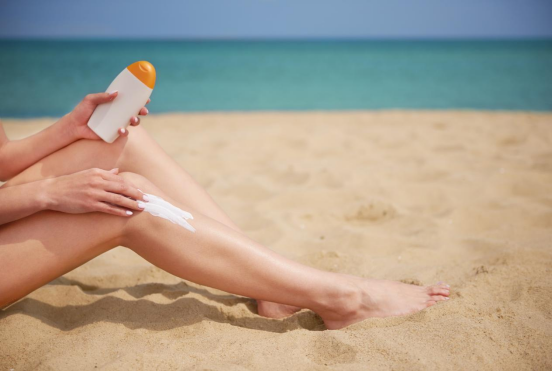
As customers end up being increasingly smart concerning skincare, the argument in between chemical and physical sun blocks remains to be a hot topic. While both offer crucial defense against the sun's dangerous ultraviolet (UV) rays, physical sun blocks are frequently lauded for their gentle yet efficient solution, making them a recommended selection for those with sensitive or reactive skin. The secret to their success lies in their active ingredients, which produce a physical obstacle on the skin to block out UV radiation. This post will certainly look into the globe of physical sun blocks, focusing on their vital active ingredients: zinc oxide and titanium dioxide.
Unlike their chemical counterparts, which absorb UV radiation and convert it into heat, physical sun blocks function by sitting on top of the skin to form a guard that disperses and spreads both UVA and UVB rays. This device is why they are often referred to as "sunscreens." The key benefit of this technique is its instant efficiency upon application and the lower possibility of triggering skin irritation, as the ingredients are not absorbed right into the skin.
One of the most popular component in the physical sunscreen family is Zinc Oxide. This powerhouse mineral is unique in its capacity to give broad-spectrum defense, indicating it efficiently protects the skin versus the complete range of UVA and UVB rays. UVA rays are accountable for premature aging, consisting of creases and great lines, while UVB rays are the primary cause of sunburn. By offering thorough defense against both, zinc oxide plays an essential duty in protecting against sun damage and lowering the danger of skin cancer.
In addition, zinc oxide is renowned for its soothing residential properties. It has been made use of for centuries to deal with minor skin irritabilities, rashes, and burns, a testimony to its gentle nature. This makes sun blocks developed with zinc oxide a perfect choice for people with sensitive skin, acne-prone skin, or problems like rosacea and eczema. Its non-comedogenic buildings likewise suggest it is less most likely to block pores, an usual issue for those with oily or mix skin.
The other principal in the physical sun block classification is Titanium Dioxide. This naturally happening mineral is another exceptional ingredient for producing a physical obstacle versus UV rays. It is highly efficient at mirroring and scattering UVB radiation, supplying robust security versus sunburn. While it offers great defense across the UVB spectrum, it is normally considered less reliable versus long-wave UVA rays compared to zinc oxide.
Therefore, titanium dioxide is often utilized in conjunction with zinc oxide in sunscreen formulas. This mix develops a synergistic effect, improving the total broad-spectrum defense of the product. By leveraging the strengths of both components, formulators can develop a sun block that offers extensive and trustworthy protection versus the sunlight's damaging rays. Like zinc oxide, titanium dioxide is also gentle on the skin and is an appropriate choice for those with delicate or conveniently aggravated skin.
Recently, developments in formula innovation have actually attended to among the preliminary downsides of physical sun blocks: the thick, white actors they would certainly commonly leave on the skin. Modern solutions currently make use of pulverized or nano-sized bits of zinc oxide and titanium dioxide, which enables a much more cosmetically sophisticated application without jeopardizing their protective abilities. This implies you can delight in the gentle, effective defense of a physical sun block without the telltale white residue.
In conclusion, physical sunscreens offer a reliable and mild means to secure your skin from the sun. Their star ingredients, zinc oxide and titanium dioxide, operate in consistency to produce a physical shield that deflects unsafe UVA and UVB rays. With their superb security profile and suitability for all skin kinds, particularly sensitive skin, physical sun blocks are an awesome force in the fight against sunlight damage. The following physical sunscreen ingredients time you are Surf the sunscreen aisle, consider the effective, protective, and skin-loving benefits of a physical solution.